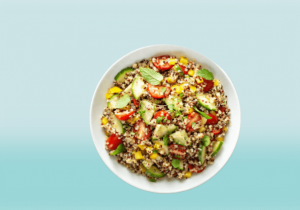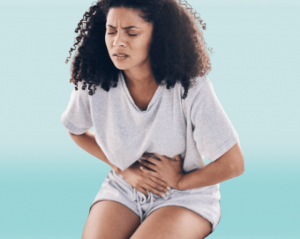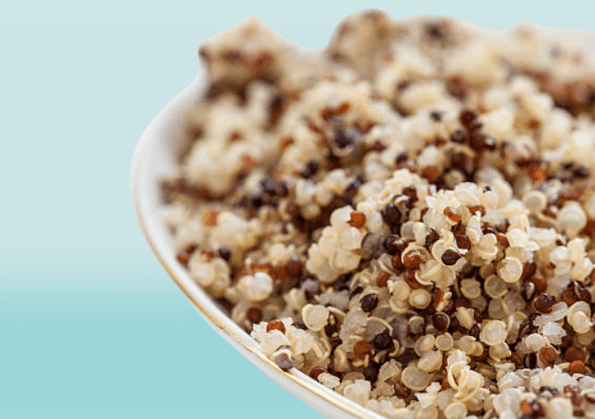Quinoa has gained immense popularity in recent years due to its numerous health benefits. However, for some people, consuming quinoa can lead to stomach pain and discomfort. If you’ve ever experienced this unpleasant side effect, you may be wondering how long it lasts and if there’s anything you can do to alleviate it. In this article, we’ll explore the duration of quinoa stomach pain and provide some insights on how you can find relief from this temporary discomfort. So, let’s dive in and find out more
How Long Does Quinoa Stomach Pain Last

Quinoa Intolerance Symptoms
Abdominal Pain
One of the most common symptoms experienced by individuals who have quinoa stomach pain is abdominal pain. This pain is often described as a cramping or aching sensation in the stomach area. It can range from mild to severe and may be accompanied by other digestive symptoms.
Bloating
Bloating is another typical symptom of quinoa stomach pain. After consuming quinoa, some individuals may feel a sensation of fullness and tightness in their abdomen. This can cause discomfort and may be accompanied by increased gassiness.
Nausea
Nausea is a common symptom experienced by those who have quinoa stomach pain. It is characterized by a feeling of unease in the stomach and a strong inclination to vomit. This symptom can vary in intensity and may be accompanied by other digestive issues.
Vomiting
In some cases, individuals may experience vomiting as a result of quinoa consumption. This is the forceful expulsion of the stomach’s contents through the mouth and can be accompanied by other symptoms such as nausea and abdominal pain.
Gas
Excessive gas or flatulence is a prevalent symptom of quinoa stomach pain. After consuming quinoa, some individuals may experience increased gas production, resulting in bloating, discomfort, and the need to pass gas frequently.
Diarrhea
Diarrhea is a common digestive symptom that can occur after consuming quinoa. It is characterized by loose, watery stools and may be accompanied by abdominal cramping and urgency to use the restroom.
Constipation
Alternatively, some individuals may experience constipation as a symptom of quinoa stomach pain. This is characterized by infrequent bowel movements and difficulty passing stools. It can cause discomfort and bloating in the abdomen.
>> Read more: Stomach pain after tooth extraction
Causes of Quinoa Stomach Pain
Saponins
Saponins are natural compounds found in high amounts in the outer layer of quinoa seeds. These compounds can cause irritation and inflammation in the digestive system, leading to stomach pain. Rinsing and soaking quinoa before cooking can help reduce the saponin content.
Phytic Acid
Quinoa contains phytic acid, which is an anti-nutrient that can interfere with mineral absorption in the body. In some individuals, high levels of phytic acid may contribute to digestive discomfort and stomach pain.
FODMAPs
FODMAPs, which stands for fermentable oligosaccharides, disaccharides, monosaccharides, and polyols, are a group of carbohydrates that some people have difficulty digesting. Quinoa contains certain types of FODMAPs that can cause digestive symptoms such as bloating and stomach pain in individuals who are sensitive to them.
Lectins
Lectins are proteins found in many plant-based foods, including quinoa. Some individuals may be sensitive to lectins and experience digestive symptoms such as stomach pain, bloating, and gas after consuming quinoa.
Gluten Contamination
Although quinoa is naturally gluten-free, cross-contamination may occur during processing or if it is prepared in a facility that also handles gluten-containing grains. For individuals with gluten sensitivity or celiac disease, even small amounts of gluten can cause stomach pain and other digestive symptoms.
Allergic Reactions
While rare, some individuals may have an allergic reaction to quinoa. This can cause symptoms such as stomach pain, nausea, vomiting, and even more severe reactions like difficulty breathing or anaphylaxis. If you suspect an allergy to quinoa, it is essential to seek medical attention.
Duration of Quinoa Stomach Pain
Varies from Person to Person
The duration of quinoa stomach pain can vary from person to person. Some individuals may experience only temporary discomfort, while others may have long-term sensitivity to quinoa. The length of time can depend on various factors, including individual sensitivity and overall digestive health.
Acute vs. Chronic Stomach Pain
Quinoa stomach pain can be categorized as either acute or chronic. Acute stomach pain refers to short-term, temporary discomfort that usually resolves within a few hours or days. Chronic stomach pain, on the other hand, persists for an extended period, often more than three months.
Temporary Discomfort vs. Long-term Sensitivity
For many individuals, quinoa stomach pain is a temporary discomfort that resolves within a short period. However, some people may develop a long-term sensitivity to quinoa, experiencing recurring stomach pain even with small amounts of consumption. It is important to identify the underlying causes and make necessary dietary adjustments to manage this sensitivity effectively.
>> Read more: Cryoskin before and after stomach
Factors Affecting Duration of Quinoa Stomach Pain
Individual Sensitivity
The level of sensitivity to quinoa can vary from person to person. Some individuals may experience stomach pain after consuming even a small amount, while others may tolerate larger quantities without any issues. Understanding one’s own level of sensitivity is essential in managing and determining the duration of quinoa stomach pain.
Amount of Quinoa Consumed
The amount of quinoa consumed can also influence the duration of stomach pain. Larger portions or repeated consumption of quinoa may result in prolonged symptoms, while smaller servings may cause only temporary discomfort. It is advisable to moderate the consumption of quinoa and listen to one’s body to find a comfortable balance.
Preparation Methods
Different preparation methods can affect the digestibility of quinoa and subsequently impact the duration of stomach pain. Proper rinsing and soaking of quinoa, as well as thorough cooking, can help reduce the presence of anti-nutrients and make it more easily digestible. Choosing appropriate cooking methods may assist in minimizing stomach pain and discomfort.
Digestive Health
The overall health of the digestive system plays a crucial role in determining the duration of quinoa stomach pain. Individuals with pre-existing digestive conditions, such as irritable bowel syndrome (IBS) or inflammatory bowel disease (IBD), may be more prone to experiencing prolonged symptoms. Optimizing digestive health through appropriate dietary choices and management strategies can help alleviate stomach pain.
Overall Diet
The composition of one’s overall diet can impact the duration of quinoa stomach pain. Individuals with a well-balanced and diverse diet that includes a variety of foods may be more resilient to quinoa-induced symptoms. On the other hand, those with a limited or monotonous diet may be more susceptible to stomach pain after consuming quinoa.
Underlying Health Conditions
Certain underlying health conditions can contribute to prolonged quinoa stomach pain. For example, individuals with autoimmune disorders, such as rheumatoid arthritis or lupus, may be more sensitive to quinoa due to their compromised immune system. It is crucial to consider these factors and consult with healthcare professionals to manage and minimize stomach pain effectively.
Recovery Time for Quinoa Stomach Pain
Usually Short-Term
In most cases, quinoa stomach pain is a short-term issue that resolves within a relatively brief period. Many individuals find partial or complete relief from their symptoms within a few hours or days after consuming quinoa.
Partial or Complete Relief within a Few Hours
After experiencing quinoa stomach pain, it is common for individuals to find partial or complete relief within a few hours. The body’s natural processes and the elimination of irritants can alleviate discomfort and restore normal digestive function.
Resolves within 24-48 Hours
For some individuals, quinoa stomach pain may take slightly longer to resolve completely. It is typical for symptoms to fade and stabilize within 24-48 hours after consuming quinoa.
May Persist Longer in Severe Cases
In more severe cases, where quinoa stomach pain is accompanied by other complications or underlying health conditions, the duration of symptoms may be longer. It is essential to seek medical attention and work with healthcare professionals to manage these cases effectively.
>> Read more: stomach pain after a massage
Self-Care Tips for Managing Quinoa Stomach Pain
Drinking Plenty of Water
Staying hydrated is crucial for managing quinoa stomach pain. Drinking plenty of water helps maintain proper digestion, supports bowel movements, and can help alleviate symptoms such as constipation or diarrhea.
Applying Heat or Cold Packs
Applying heat or cold packs to the abdomen can provide relief from quinoa stomach pain. Heat can help relax the muscles and reduce cramping, while cold packs can numb the area and reduce inflammation.
Consuming Gentle Foods
When experiencing quinoa stomach pain, consuming gentle, easily digestible foods can help soothe the digestive system. Opt for foods such as steamed vegetables, soups, or well-cooked grains. Avoiding spicy, greasy, or processed foods can also reduce the risk of aggravating symptoms.
Avoiding Trigger Foods
Identifying and avoiding trigger foods can help manage quinoa stomach pain effectively. Pay attention to foods that consistently cause discomfort and eliminate or limit them from your diet. Keeping a food diary can be helpful in identifying potential trigger foods.
Maintaining a Food Diary
Keeping a food diary is an excellent way to track symptoms and identify patterns related to quinoa stomach pain. Note down the foods you consume, portion sizes, and any symptoms experienced. This can help pinpoint specific triggers or sensitivities and make informed dietary adjustments.
Trying Over-the-Counter Medications
In certain cases, over-the-counter medications can provide temporary relief from quinoa stomach pain. Antacids or anti-diarrheal medications may help alleviate symptoms such as acid reflux or diarrhea. However, it is important to consult a healthcare professional and follow their guidance when using any medications.
When to Seek Medical Attention
Severe or Prolonged Symptoms
If quinoa stomach pain is severe or persists for an extended period, it is vital to seek medical attention. These may be signs of underlying health conditions that require professional assessment and treatment.
Presence of Blood in Stool
The presence of blood in the stool is a concerning symptom that should not be ignored. It may indicate a more serious issue such as gastrointestinal bleeding or inflammation. Medical attention should be sought immediately if blood is seen in the stool.
Unexplained Weight Loss
Unexplained weight loss accompanied by quinoa stomach pain should be evaluated by a healthcare professional. This could be a sign of underlying digestive disorders or malabsorption issues that require further investigation.
Symptoms of Dehydration
If quinoa stomach pain is accompanied by symptoms of dehydration, such as excessive thirst, dry mouth, or dark urine, it is important to seek medical attention. Dehydration can lead to serious complications and should be addressed promptly.
Symptoms Persisting despite Lifestyle Changes
If lifestyle changes, such as modifying your diet or following self-care tips, do not alleviate quinoa stomach pain, it is recommended to consult with a healthcare professional. They can help identify potential underlying causes and develop a personalized treatment plan.
Importance of Proper Quinoa Preparation
Rinsing and Soaking
Properly rinsing and soaking quinoa before cooking can remove some of the saponins and reduce the risk of stomach pain. Rinse quinoa thoroughly under cold water to remove the outer coating and soak it for 15-30 minutes to further reduce anti-nutrients.
Cooking Thoroughly
Cooking quinoa thoroughly is essential for making it more digestible and reducing the risk of stomach pain. Cook it with an appropriate amount of water or broth until it is soft and the grains have expanded. This ensures that the quinoa is properly cooked and easier to digest.
Reducing Saponin Content
Saponins can contribute to quinoa stomach pain, but their content can be reduced through rinsing, soaking, and cooking methods. Although these measures may not completely eliminate saponins, they can significantly reduce their presence and minimize the risk of digestive discomfort.
Tips for Avoiding Quinoa Stomach Pain
Gradually Increase Quinoa Intake
If you have experienced quinoa stomach pain in the past, it is advisable to gradually increase your intake to assess your tolerance. Start with small portions and monitor your body’s response. This allows you to identify any potential sensitivities and make necessary adjustments.
Limit Portion Size
Portion control is important when consuming quinoa to avoid overloading the digestive system. Start with smaller portions and assess how your body reacts before increasing the serving size. Moderation is key to prevent excessive strain on the stomach.
Pairing Quinoa with Digestive Aids
Some individuals may find it beneficial to pair quinoa with digestive aids such as probiotics or digestive enzymes. These supplements can help support the digestive process and reduce the risk of stomach pain. It is important to consult with a healthcare professional before incorporating any supplements into your routine.
Choosing Pre-Washed Quinoa
Opting for pre-washed quinoa can save time and effort in the rinsing process. Pre-washed quinoa has already undergone a thorough washing process to remove saponins and reduce the risk of stomach pain. However, it is still recommended to rinse it briefly under water before cooking.
Opting for Quinoa Alternatives
If you consistently experience quinoa stomach pain even after trying different preparation methods or portion sizes, it may be necessary to opt for quinoa alternatives. There are various gluten-free grains, such as rice, millet, or buckwheat, that can be substituted for quinoa.
Seeking Professional Advice
Consulting a Doctor or Registered Dietitian
If quinoa stomach pain persists or is causing significant discomfort, it is advisable to consult a healthcare professional. A doctor or registered dietitian can assess your symptoms, review your medical history, and provide personalized advice to manage and prevent future occurrences of stomach pain.
Allergy or Sensitivity Testing
If you suspect an allergy or sensitivity to quinoa, allergy or sensitivity testing can provide valuable insights. These tests can identify specific triggers and help develop a tailored approach to managing stomach pain and avoiding potential allergens.
Customizing a Diet Plan
Working with a registered dietitian can be beneficial in customizing a diet plan that addresses quinoa stomach pain and any underlying digestive issues. They can provide guidance on appropriate food choices, portion sizes, and meal planning to support optimal digestion and minimize symptoms.
Exploring Other Potential Causes
If quinoa stomach pain persists or recurs despite lifestyle changes, it is important to explore other potential causes with the help of a healthcare professional. They can evaluate your symptoms, order additional tests if necessary, and determine if there are any underlying conditions contributing to the stomach pain.
How to Relieve Stomach Pain from Quinoa
There are several things you can do to relieve the discomfort.
Drink Plenty of Water
Drinking plenty of water can help to flush out your digestive system and relieve stomach pain. Aim to drink at least eight glasses of water per day. You can also try drinking warm water with lemon to help soothe your stomach.
Try Ginger or Peppermint Tea
Ginger and peppermint tea are both natural remedies that can help to relieve stomach pain. Ginger has anti-inflammatory properties that can calm an upset stomach, while peppermint can help to reduce nausea and cramping.
Take a Walk
Taking a walk after eating can help to stimulate digestion and relieve stomach pain. Try taking a 10-15 minute walk after your meals to help ease any discomfort.
Use a Heating Pad
Using a heating pad on your stomach can help to relieve stomach pain and cramping. Heat can help to relax your muscles and improve blood flow to the affected area.
Avoid Trigger Foods
If you are experiencing stomach pain after eating quinoa, it may be helpful to avoid other trigger foods that can exacerbate your symptoms. Some common trigger foods include dairy products, spicy foods, and fatty foods.
Is Quinoa Allergy Common
Food allergies are more common than most people may think. People may be allergic to gluten, nuts, fish, dairy, eggs, soy, and even superfoods like quinoa. According to Thrive Market, quinoa allergies are not very common, but they can occur.

Quinoa allergy symptoms can vary from person to person, but some common symptoms include stomach pain, nausea, vomiting, diarrhea, bloating, gas, itchy skin, hives, swelling of the lips, tongue, or throat, and difficulty breathing. As with any allergy, a severe allergic reaction to eating quinoa can also occur, which can cause elevated heart rate, pale skin, low blood pressure, and even anaphylaxis.
In conclusion how long does quinoa stomach pain last, quinoa stomach pain can be a common issue for some individuals due to various reasons such as saponins, phytic acid, FODMAPs, lectins, gluten contamination, or allergic reactions. The duration of stomach pain can vary from person to person, and factors such as individual sensitivity, the amount of quinoa consumed, preparation methods, overall diet, digestive health, and underlying health conditions can influence its duration. Fortunately, quinoa stomach pain is usually short-term, and self-care tips such as drinking plenty of water, applying heat or cold packs, consuming gentle foods, avoiding trigger foods, maintaining a food diary, and trying over-the-counter medications can help manage the symptoms. However, if symptoms are severe or persist, medical attention should be sought. Proper quinoa preparation, including rinsing and soaking, thorough cooking, and reducing saponin content, is crucial to minimize the risk of stomach pain. Additional tips for avoiding quinoa stomach pain include gradually increasing quinoa intake, limiting portion size, pairing quinoa with digestive aids, choosing pre-washed quinoa, and opting for quinoa alternatives. Seeking professional advice from a doctor or registered dietitian, allergy or sensitivity testing, customizing a diet plan, and exploring other potential causes are important steps in managing and addressing quinoa stomach pain effectively.
